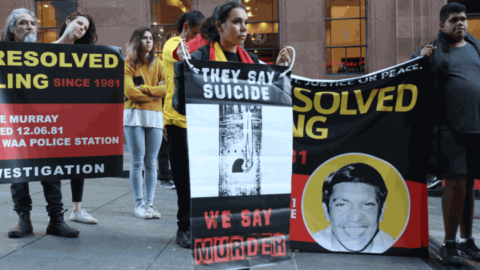
First Nations custodial deaths have continued this summer. Over the holiday period, two Aboriginal people have died in WA correctional facilities, with a 45-year-old man having fatally collapsed whilst playing basketball in Geraldton’s Greenough Regional Prison on 27 December.
This followed 41-year-old Dannielle Lowe dying at Fiona Stanley Hospital on Christmas Eve, after she suffered a medical episode at Perth’s Wandoo Rehabilitation Centre. The Aboriginal woman had been complaining of severe migraines in the days leading up to her death.
A 51-year-old detainee was further found unresponsive in his cell at the Kowanyama Watchhouse in northern Queensland on 8 November. The First Nations man was pronounced dead after being taken to a local medical clinic.
Whilst the National Deaths in Custody Program outlines that, as of last September, 527 Aboriginal and Torres Strait Islander people have died in the custody of Australian police or corrective services since the Royal Commission into Aboriginal Deaths in Custody tabled its 1991 report.
A lack of accountability
Deaths in custody are disproportionately affecting First Nations communities, as their overrepresentation in the prison system is stark.
Indigenous peoples make up 32 percent of the nation’s adult prisoners, yet they only account for a little over 3 percent of the entire population.
The circumstances of First Nations custodial deaths cannot simply be reduced to numbers inside, however, as Indigenous people face systemic racism in custody, which leads to brutalisation and medical neglect, with attempts to seek treatment for ailments often put down to “trying it on”.
And despite so many Aboriginal people having lost their lives at the hands of Australian police or corrective services, no officers have ever been convicted in relation to these deaths, and indeed, last year saw two high profile custodial murder cases result in no convictions.
NT police constable Zachary Rolfe shot Warlpiri teenager Kumanjayi Walker in 2019 at point blank range twice in the torso, while his partner was on top of him. Yet, an all-non-Indigenous jury acquitted him of murder last March.
And the jury in the murder trial of an unnamed NSW Corrective Services officer, who shot and killed 43-year-old Dwayne Johnstone in 2019, was unable to return a verdict on the offence of murder or the alternative of manslaughter in November.
This was despite the guard having shot the fleeing Wiradjuri inmate in the back as he was handcuffed and shackled out the front of Lismore Base Hospital.
A neglected blueprint
Greens Senator Dorinda Cox spoke out about ongoing Aboriginal custody deaths late last month, stressing that these fatalities should not be viewed as unavoidable, but rather the authorities should be ensuring that people inside are able to access appropriate healthcare.
The Yamatji Noongar woman called on governments across the continent to implement the entire 339 recommendations handed down by the Royal Commission into First Nations custody deaths in 1991, adding “we cannot keep turning a blind eye and accepting these devastating outcomes”.
Despite the comprehensive scope of the recommendations made by the national inquiry, much of them remain unimplemented.
Recommendation 87 suggests that arrest should be a sanction of last resort for First Nations people, whilst the 92nd states that such a stipulation should also apply to imprisonment.
Although these suggested aims remain simply that, as Aboriginal and Torres Strait Islander arrest and incarceration rates have significantly escalated over the last three decades.
